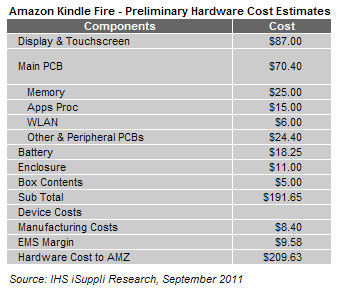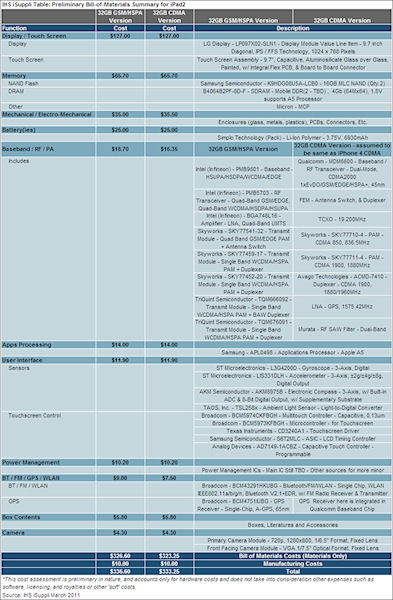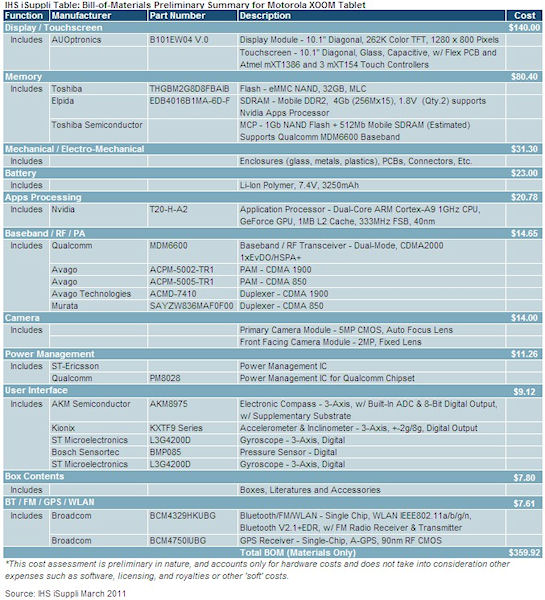At a loss to compete
Much of the initial reaction to last week's launch of the Kindle Fire amounted to one observation: Apple and Amazon are dividing the tablet market between them, and everyone else is in trouble.
Apple already has the high-end sewn up, and the best efforts of the Android ecosystem have done little to change that. Now, with a price of $199, the Kindle Fire has given any OEMs that hope undercut Apple a whole new set of issues.
One of the problems Apple created for the competition when it launched the iPad was its pricing. Rather than go for the usual Apple fat margins, it deliberately slimmed these down in order to make the inevitable industry response as challenging as possible.
Market researcher iSuppli specialises in ‘teardowns', in which it takes a new devices to pieces in order to estimate the total price of its component parts, otherwise known as the bill of materials (BOM). Here's the table it published earlier this year (click to enlarge) for the 32GB 3G iPad 2, which sells for $729.
Note the 16GB Wi-Fi one only costs $499, so people are paying $230 for 16GB of flash and a modem, which probably cost Apple around $40. This is where the nice margin comes for Apple, while allowing it to still set the bar for a ten inch tablet at $500.
Now here's the iSuppli BOM estimation for the Motorola Xoom, which was the flagship Honeycomb device expected to give the iPad a run for its money. Moto pays component makers around $25 more for an equivalently specced tablet, and that not necessarily taking Apple's greater economies of scale into account. Given the relative immaturity of the platform too, they were always going to struggle.
Lastly, here's the recent preliminary BOM estimation for the Kindle Fire. As you can the list of components is much smaller and there's a decent saving from having a smaller device. But the BOM figure still comes to around $210 - more than Amazon is selling the Kindle Fire for. This means Amazon is losing money on each sale, and that's before we even get into the costs of distribution, marketing, etc.

The business model is clear. Just as with the e-ink Kindles, the Fire is intended as a consumption device that will encourage users to make purchases from Amazon (let's not forget it's an e-tailer first and foremost) of the various media you can access from the device.
In order to justify this massive investment in such a loss-leader device Amazon has apparently had to gear the Fire towards Amazon electronic marketplaces such that users may find the general tablet user experience to be rather more restricted than they'd hoped. But when they can buy one for a third of the price of most full-fat tablets, consumers will probably accept the compromises - as did the many who stampeded for a $100 TouchPad.
The problem everyone else faces is that they have neither the brand, ecosystem and economies of scale of Apple, nor the e-commerce power to justify pricing their tablet as a loss-leader. Right now it's hard to argue with the initial prognosis that Apple and Amazon are dividing the tablet market between them, and it's equally hard to see what the chasing pack can do about it.















